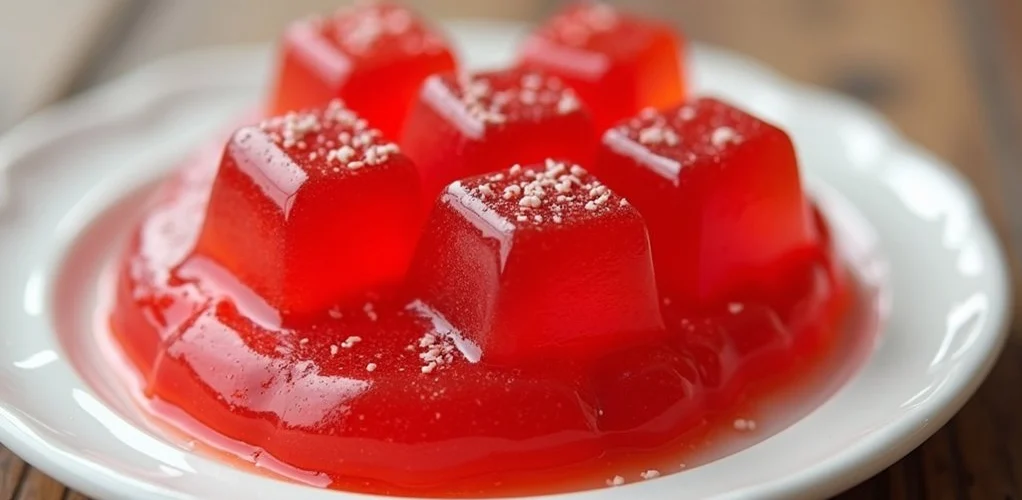
Regular Jello contains high sugar content, making it unsuitable for low-carb diets. While sugar-free varieties exist, they often contain hidden ingredients like maltodextrin and sugar alcohols that can impact blood sugar levels and ketosis. Even sugar-free versions require careful consideration of net carbs and portion control. Making homemade Jello with unflavored gelatin and approved sweeteners offers better control over ingredients. Understanding the nuances of Jello's ingredients reveals important considerations for maintaining a low-carb lifestyle.
Key Takeaways
- Regular JELL-O contains 86% sugar and high carbohydrates, making it unsuitable for low-carb diets.
- Sugar-free Jello contains only 10 calories per serving but may include hidden ingredients that affect blood sugar levels.
- Maltodextrin and sugar alcohols in sugar-free versions can impact ketosis and raise blood glucose unexpectedly.
- Making homemade keto Jello with unflavored gelatin and approved sweeteners ensures better control over carbohydrate content.
- Label reading is crucial as manufacturers can legally round down small carb amounts, potentially affecting daily macro targets.
The Truth About Jello's Sugar Content
Many consumers might be surprised to learn that JELL-O is not the diet-friendly dessert they believe it to be. The reality is that JELL-O consists mainly of sugar, making up approximately 86% of its composition, which places it firmly in the category of high-carbohydrate foods. This popular dessert's reputation as a low-calorie option has led many dieters astray, as its considerable sugar content contributes considerable empty calories to daily nutritional intake. The absence of beneficial nutrients, such as vitamins and fiber, further compounds the issue. Regular monitoring of cholesterol through lipid panel testing is essential for health management, even when consuming seemingly harmless treats like JELL-O. For those monitoring their carbohydrate consumption, careful attention to JELL-O's nutritional label is essential, as its sugar content can quickly derail dietary goals and impact blood sugar levels more profoundly than many realize.
Understanding Net Carbs in Store-Bought Jello
When examining store-bought Jello products, consumers must carefully consider the concept of net carbs, which extends beyond the simple "sugar-free" labels on packaging. While manufacturers may advertise zero grams of carbohydrates per serving, the presence of sugar alcohols and ingredients like maltodextrin can impact the true carbohydrate content. Understanding net carbs requires looking beyond front-label claims and scrutinizing the ingredient list. Though sugar-free Jello typically contains only 10 calories per serving, hidden ingredients can affect blood sugar levels differently for each individual. For those following low-carb diets, it's essential to note that sugar alcohols in these products may influence weight loss progress and glycemic response. To ensure adherence to a low-carb lifestyle, consumers should be vigilant in distinguishing hidden sugars on the ingredient list, as they can inadvertently contribute to carb intake. Careful label reading and consideration of personal metabolic responses should guide decisions about incorporating store-bought Jello into a low-carb lifestyle.
Hidden Ingredients That Impact Ketosis
Despite their "sugar-free" labels, popular jello products often contain hidden ingredients that can greatly impact ketosis and derail low-carb dietary goals. Many seemingly innocent ingredients like maltodextrin and dextrose can spike blood sugar levels, while sugar alcohols contribute to overall net carb counts. Sugary foods and drinks like Coca-Cola and sweetened yogurts, if consumed, could similarly disrupt ketosis due to their high carb content.
- Maltodextrin: A common filler that raises blood glucose similarly to regular sugar
- Sugar Alcohols (sorbitol, maltitol): Can affect ketosis and add unexpected net carbs
- Artificial Sweetener Fillers: May contain dextrose or other carb-heavy additives
Understanding these hidden ingredients requires careful label reading and ingredient analysis. While products may technically qualify as sugar-free according to labeling laws, their impact on ketosis can be significant. For those following a strict ketogenic diet, these seemingly minor ingredients can make the difference between maintaining or disrupting ketosis.
Sugar-Free Jello and Blood Sugar Response
Although sugar-free jello products market themselves as carb-free alternatives, their impact on blood sugar levels can vary considerably among individuals.
Common sugar alcohols like maltitol, frequently found in these products, can trigger unexpected blood sugar responses despite their zero-carb label claims.
Sugar alcohols in zero-carb products may still affect blood glucose levels, making label claims potentially misleading for sensitive individuals.
Many consumers report experiencing blood sugar spikes after consuming sugar-free jello, highlighting the importance of personal monitoring and awareness.
While nutrition labels may indicate zero carbohydrates, manufacturers can legally round down small amounts due to serving size regulations.
For those strictly monitoring their blood sugar or following a ketogenic diet, homemade gelatin desserts using unflavored gelatin offer a more reliable zero-carb option.
This alternative eliminates the risk of hidden ingredients and provides better control over the final product's composition.
Incorporating non-starchy vegetables into one's diet can further support blood sugar management and align with a ketogenic dietary approach.
Making Your Own Keto-Friendly Jello
Creating keto-friendly jello at home requires just a few essential ingredients, including unflavored gelatin powder, water, and approved low-carb sweeteners like erythritol or stevia. The preparation process involves dissolving the gelatin in hot water, adding sweeteners and flavorings of choice, and allowing the mixture to set in the refrigerator for several hours. Home cooks can experiment with various flavor combinations by incorporating natural extracts, unsweetened fruit purees, or sugar-free beverages while maintaining strict keto compliance. An important consideration is choosing sweeteners with a low glycemic index to ensure minimal impact on blood sugar levels.
Basic Ingredients Needed
The foundation of homemade keto-friendly jello starts with a few essential ingredients that provide both satisfying texture and low-carb content.
When gathering supplies for this sugar-free treat, focus on items that offer structure, sweetness, and flavor while maintaining minimal carbohydrates.
- Unflavored gelatin powder – provides the necessary structure and contains zero carbs
- Natural sugar alternatives – stevia or erythritol for sweetness without impacting blood sugar
- Flavoring options – sugar-free extracts or low-carb fruit purees for taste enhancement
These basic components work together to create a versatile dessert that fits perfectly within a low-carb lifestyle.
The combination of gelatin's protein content and natural sweeteners guarantees a satisfying treat without compromising dietary goals, while allowing for endless flavor possibilities through various extract combinations.
Simple Preparation Steps
Making your own keto-friendly jello follows several straightforward steps that confirm delicious results while maintaining low carbohydrate content. The process begins by combining unflavored gelatin with water and a preferred low-carbs sweetener to create the foundation.
A portion of the water should be heated to guarantee proper dissolution of the gelatin, then mixed with the remaining cold water for ideal consistency.
For enhanced flavor, natural fruit extracts or pureed berries can be incorporated while staying within keto guidelines. The mixture is then transferred to a mold or container and refrigerated for 2-4 hours until completely set.
Those seeking additional variety can experiment with keto-friendly additions like whipped cream or cream cheese, creating different textures while maintaining the dessert's low-carb profile.
Flavoring Your Homemade Jello
Successfully flavoring homemade keto-friendly jello requires careful selection of ingredients that maintain low carbohydrate content while delivering satisfying taste.
The flavoring process allows for creativity while staying within ketogenic dietary guidelines, utilizing natural ingredients and sugar alternatives.
- Incorporate pure extracts like vanilla or natural fruit oils for concentrated flavor without added carbs.
- Blend in small amounts of pureed low-carb berries for natural sweetness and color.
- Add citrus elements through lemon or lime juice to enhance overall taste profile.
When flavoring keto jello, experimentation with different sweetener combinations helps achieve the perfect balance.
Using measured amounts of erythritol or stevia guarantees the dessert remains low-carb while matching personal taste preferences.
This methodical approach to flavoring allows for variety in your keto dessert rotation while maintaining strict carbohydrate limits.
Common Myths About Sugar-Free Desserts
Popular misconceptions about sugar-free desserts often lead consumers to make uninformed dietary choices. Many people incorrectly assume that sugar-free products, including jello, contain zero carbohydrates and are automatically safe for diabetics. In reality, these desserts frequently contain sugar alcohols and other fillers that contribute to their total carbohydrate content. Another widespread myth is that all sugar-free desserts are low in calories and beneficial for weight management. However, manufacturers often compensate for the lack of sugar by adding fats or other calorie-dense ingredients to improve taste and texture. Additionally, certain sugar substitutes, such as maltitol, can cause blood sugar fluctuations similar to regular sugar. It's important to recognize that protein needs vary based on activity level and body composition, which can influence how sugar-free products impact individual dietary goals. Understanding these facts emphasizes the importance of carefully reading labels and researching specific sweeteners used in sugar-free products.
Natural Alternatives to Traditional Jello
Several natural alternatives to traditional jello offer health-conscious individuals more nutritious options for satisfying their dessert cravings. For those seeking treats that are low in carbs, homemade versions using unflavored gelatin mixed with fruit purees provide complete control over ingredients and sweetness levels.
- Yogurt-gelatin combinations create protein-rich desserts with probiotic benefits.
- Chia seed puddings offer omega-3 fatty acids and natural thickening properties.
- Coconut milk-based gelatin desserts deliver dairy-free, creamy satisfaction.
These alternatives not only provide better nutritional profiles but also allow for creative customization. Plain Greek Yogurt can be used in these desserts to add protein while keeping the carb count low. Fresh berries can be incorporated for natural sweetness and essential nutrients, while coconut milk variations can be enhanced with vanilla or cocoa for sophisticated flavor profiles, all while maintaining a low-carb status.
The Role of Gelatin in Low-Carb Dieting
While natural alternatives offer many benefits, understanding the fundamental role of gelatin itself reveals why it stands as a cornerstone ingredient in low-carb dietary approaches. Gelatin's zero carb content makes it exceptionally valuable for creating Jello and other desserts that align with ketogenic and low-carb lifestyles. As a protein derived from collagen, gelatin contributes minimal calories while providing essential structure to low-carb recipes. Its versatility extends beyond simple Jello preparations, allowing for both sweet and savory applications without impacting daily carbohydrate limits. The ingredient's ability to support fat burning as the primary energy source makes it particularly beneficial for those following strict low-carb protocols. Additionally, gelatin, which shares similar absorption properties with hydrolyzed collagen, enhances the body's ability to utilize essential proteins effectively. This combination of versatility and metabolic benefits positions gelatin as an invaluable tool for maintaining dietary compliance while enjoying satisfying treats.
Reading Labels: What to Watch For
The careful scrutiny of Jello product labels reveals critical information that can make or break a low-carb diet's success. When evaluating carb jello options, consumers must look beyond the front-package claims and examine the nutritional information panel thoroughly. 1. Check serving sizes carefully, as multiple servings of sugar-free jello can add unexpected carbs. 2. Investigate sweetener types listed in ingredients, particularly maltodextrin and sugar alcohols. 3. Review the complete ingredients list for hidden sugars and fillers that may impact ketosis. Understanding food labels requires attention to detail, as manufacturers may legally round down carbohydrate content under certain thresholds. Products marketed as zero-carb may contain trace amounts that accumulate when consuming multiple servings, potentially disrupting ketogenic or low-carb dietary goals. It's important to note that maintaining a balanced macronutrient ratio is crucial for the success of a ketogenic diet, as it helps in achieving and sustaining ketosis.
Impact of Artificial Sweeteners on Ketosis
While artificial sweeteners in sugar-free Jello may appear keto-friendly at first glance, their impact on blood sugar levels requires careful consideration. Different sweeteners can affect ketosis in varying ways, with some potentially triggering insulin responses that could disrupt fat-burning mechanisms despite their "zero-calorie" status. Understanding the specific sweeteners used in Jello products, particularly sugar alcohols and artificial alternatives, becomes essential for maintaining stable ketosis and avoiding hidden metabolic disruptions. It's important to note that some sweeteners might also contribute to digestive issues due to their low fiber content, which is a potential risk of the ketogenic diet.
Blood Sugar Impact Concerns
Understanding how artificial sweeteners affect blood sugar levels becomes particularly important for individuals following a ketogenic diet. While many sugar-free jello products claim to be keto-friendly, their impact on blood glucose can vary greatly among different people, potentially disrupting ketosis and weight loss efforts.
- Some artificial sweeteners, like maltitol, can cause unexpected blood sugar spikes despite being marketed as sugar-free.
- Hidden ingredients such as maltodextrin and dextrose may contribute to total carbohydrate content.
- Individual responses to artificial sweeteners differ, making personal glucose monitoring essential.
When selecting sugar-free jello products, consumers should prioritize options containing erythritol or stevia, as these sweeteners typically have minimal effects on blood sugar levels.
Careful label reading remains vital to identify potentially problematic ingredients that could affect ketosis maintenance.
Hidden Ketosis Disruption Risks
Hidden complications lurk beneath the surface of sugar-free jello products, potentially derailing ketosis even when dieters believe they're making keto-friendly choices.
Sugar alcohols like maltitol, commonly found in these products, can unexpectedly raise blood sugar levels and disrupt the delicate metabolic state required for ketosis. Despite marketing claims of being carb-free, these products often contain trace amounts of carbohydrates that accumulate throughout the day, impacting overall macro targets.
The artificial sweeteners present in sugar-free jello can trigger sweet cravings, making it more challenging to maintain strict dietary compliance necessary for ketosis.
Individual responses to these sweeteners vary considerably, with some people experiencing blood sugar fluctuations that could compromise their ketogenic state, highlighting the importance of careful label reading and personal response monitoring.
Best Practices for Enjoying Jello on Keto
Successfully enjoying jello on a ketogenic diet requires careful attention to ingredient selection and preparation methods. To maintain ketosis while satisfying sweet cravings, following best practices guarantees ideal results while managing total carbs effectively.
- Make homemade jello using unflavored gelatin and keto-approved sweeteners like erythritol or stevia.
- Read product labels thoroughly, checking for hidden carbs and potentially problematic ingredients like maltodextrin.
- Track portion sizes and incorporate them into daily carb calculations.
When choosing store-bought options, carefully examine nutrition facts and ingredients lists, as manufacturers may include hidden carbohydrates even in sugar-free varieties.
For the most reliable results, preparing jello at home allows complete control over ingredients and guarantees compatibility with ketogenic dietary requirements. Regular blood sugar monitoring can help identify individual responses to different jello products.
Smart Portion Control Strategies
Portion control stands as a fundamental element for anyone incorporating jello into a low-carb eating plan. Several smart portion control strategies can help individuals maintain their carbohydrate limits while enjoying this sweet treat.
Using smaller bowls and pre-portioning jello into individual servings helps prevent overconsumption and reduces the temptation to indulge in larger amounts. Measuring specific serving sizes, typically limiting portions to 1/2 cup, guarantees better adherence to low-carb guidelines.
Additionally, maintaining a food diary or utilizing tracking apps allows individuals to monitor their total carbohydrate intake and understand how jello fits within their daily limits. These conscious portion control practices enable people to satisfy their sweet cravings while staying committed to their low-carb dietary goals.
Combining Jello With Other Keto-Friendly Foods
While sugar-free Jello can be enjoyed on its own, combining it with other keto-friendly ingredients creates more satisfying and nutritionally complete dessert options.
For those following a Keto Diet, integrating Jello with high-fat components like whipped cream or cream cheese can deliver decadent treats while maintaining low carb counts.
- Mix sugar-free Jello with unsweetened coconut milk or almond milk for a creamy, satisfying dessert.
- Layer Jello with fresh berries and yogurt for added nutrients and texture.
- Combine with gelatin-based desserts like panna cotta for increased protein content.
These creative combinations not only enhance the taste experience but also provide additional nutritional benefits.
Frequently Asked Questions
Can You Eat Jello on a Low Carb Diet?
While making dietary choices, individuals can consume sugar-free jello in moderation on low-carb diets, but should monitor hidden carbohydrates from sugar alcohols and fillers in commercial varieties.
Does Jello Have Carbs or Sugar?
Regular JELL-O contains sugar and carbohydrates, while sugar-free flavor variations contain minimal carbs from maltodextrin and sugar alcohols. Carb content varies between 7-19g per serving depending on type.
Is Sugar Free Jello Ok to Eat on a Diet?
Sugar-free Jello can fit within most dietary restrictions when consumed in moderation. However, individuals should monitor their response to sugar alcohols and maltodextrin for ideal weight management results.
What Kind of Sweetener Is in Sugar Free Jello?
Sugar-free jello contains artificial sweetener alternatives like aspartame, sucralose, or acesulfame potassium. Some varieties also include sugar alcohols such as maltitol to achieve their sweet taste without sugar.
Conclusion
When choosing jello on a ketogenic diet, careful label reading and mindful consumption are essential. While sugar-free versions can fit into a low-carb lifestyle, consumers should consider artificial sweeteners' individual effects and opt for natural alternatives when possible. Whether store-bought or homemade, jello can be incorporated into a ketogenic diet when portion sizes are controlled and ingredients are carefully selected. Success lies in understanding both the obvious and hidden carbohydrate content while making informed choices.
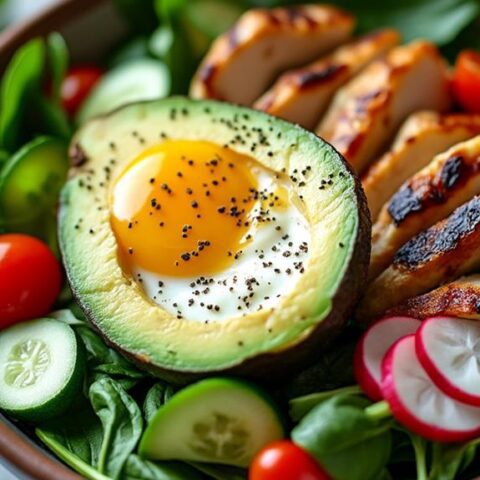
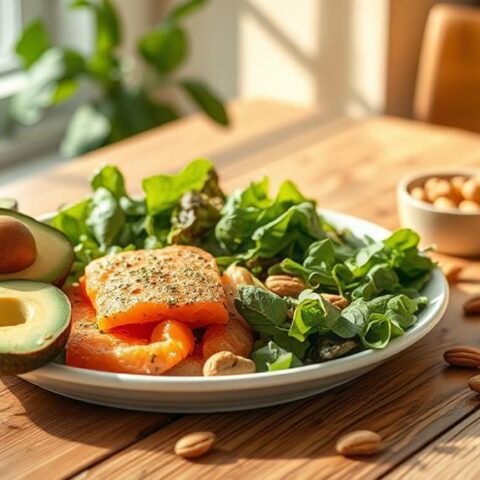

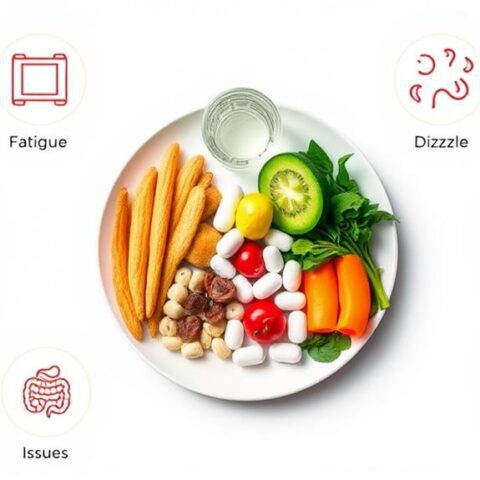




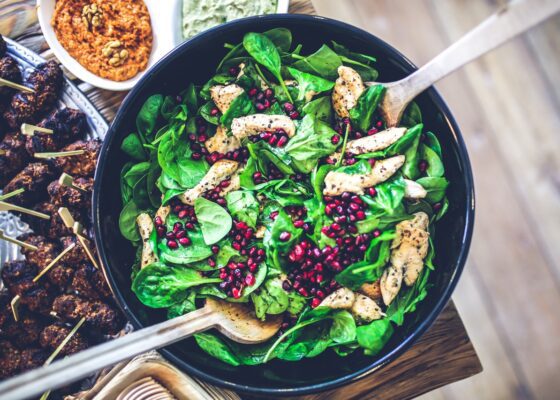

No Comments